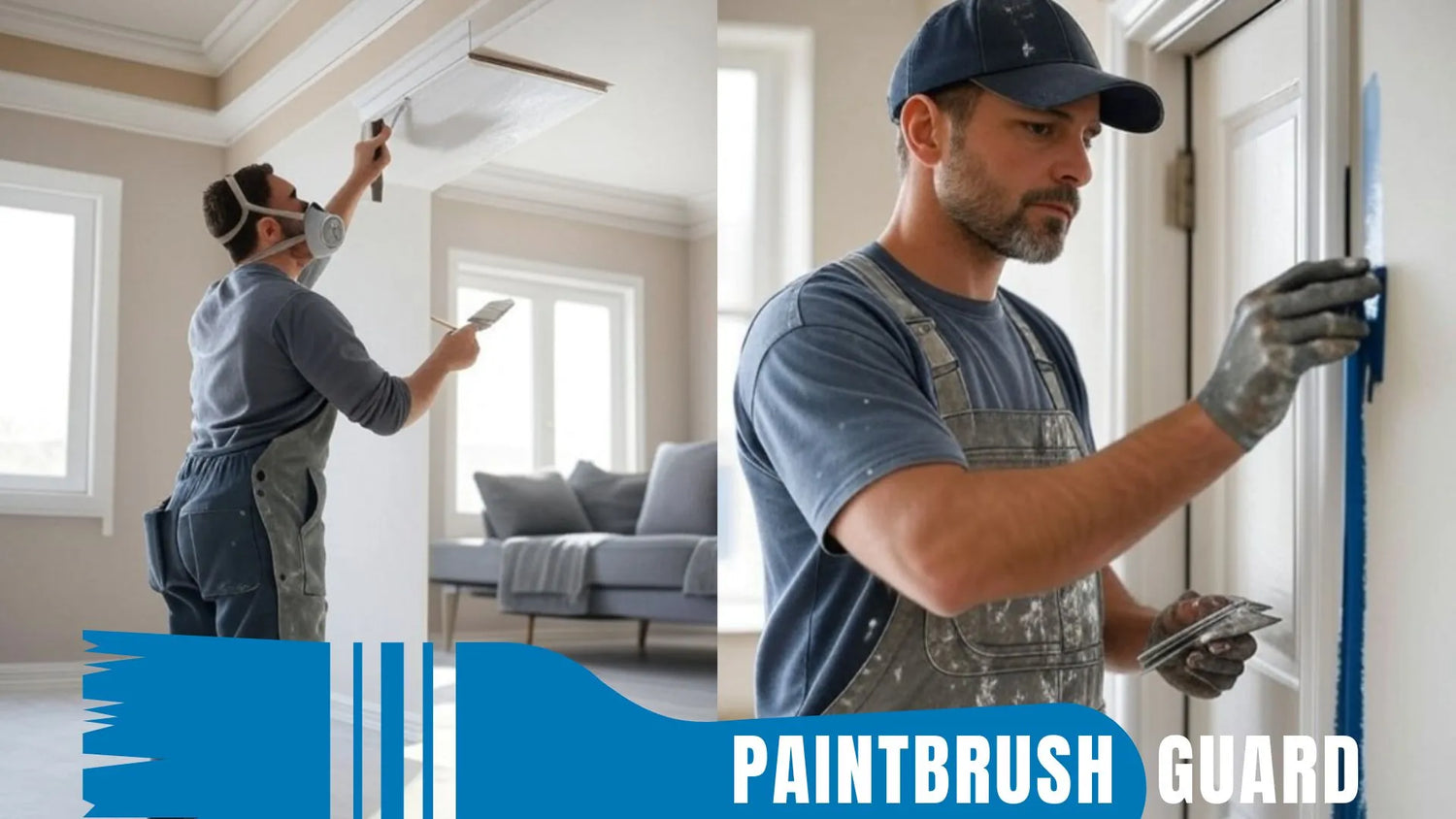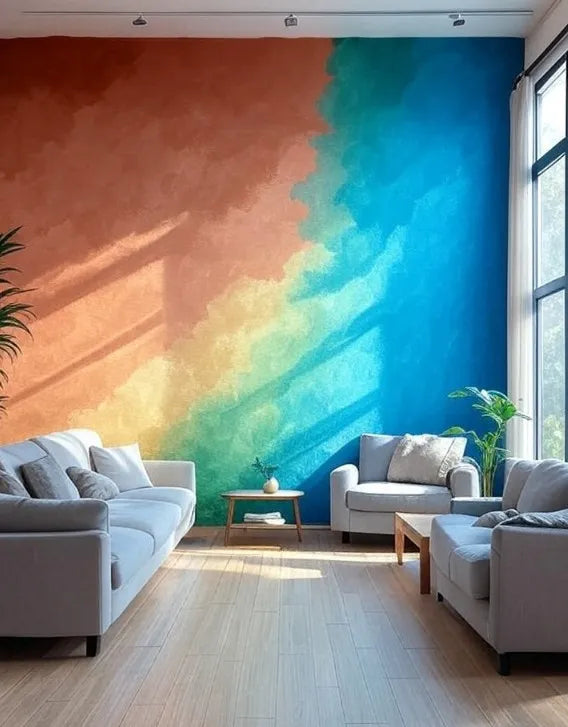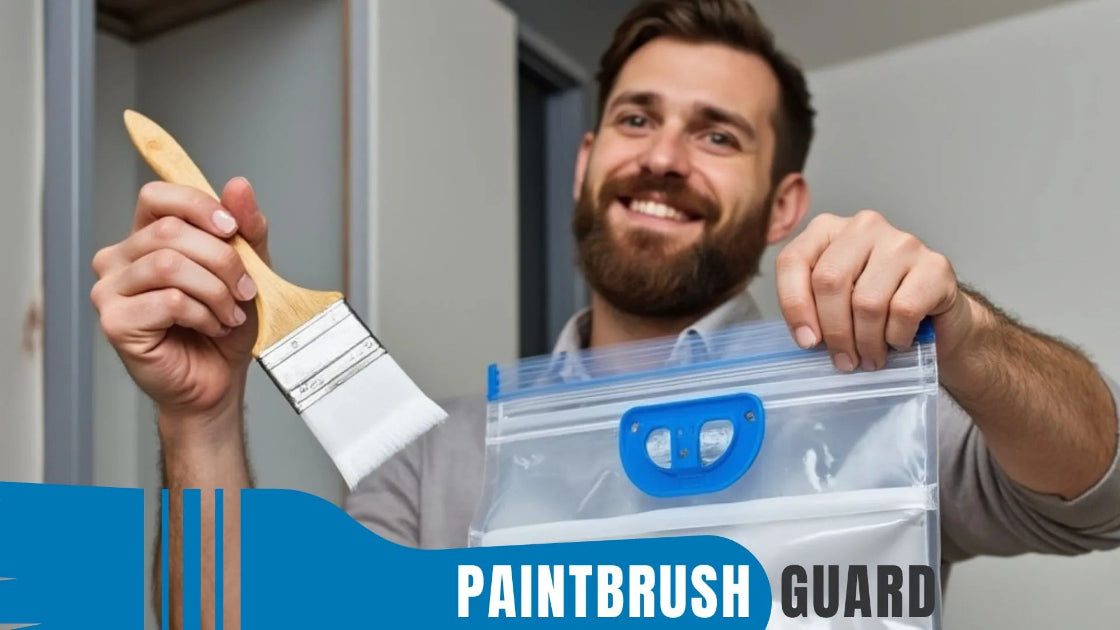
Essential Tips and Tools for Fail-Free House Painting
|
Time to read 9 min
|
Time to read 9 min
Before you dip your brush into a can of paint, preparation is key. Proper prep work sets the foundation for a long-lasting and beautiful finish.
The preparation process might seem tedious, but it is this groundwork that prevents future headaches and ensures the paint adheres properly and uniformly.
Click on this link to find house painting guides and innovative tools to help you with your home improvement painting project.
Start by inspecting the surfaces you'll be painting. Look for any cracks, holes, or peeling paint that need attention.
Repairing these imperfections before painting is crucial to ensure a smooth and even finish. Use caulk to fill small gaps and patch larger holes with appropriate fillers.
Additionally, address any signs of water damage or mold, as these issues can compromise the integrity of your paint job if not handled before painting begins.
Taking the time to properly sand surfaces is also essential, especially if you're repainting or dealing with glossy surfaces.
Sanding creates a slightly rough texture that allows new paint to adhere more effectively.
Don't forget to remove or cover fixtures and hardware, protecting them from accidental paint splatters.
Learn how to prep exterior wood painting during rainy seasons with these 5 essential tips. Ensure a durable, professional finish despite wet weather challenges.
Cleaning surfaces is an often overlooked step, but it's vital for paint adhesion. Dirt, dust, and grease can prevent paint from sticking properly. Wash exterior walls with a pressure washer or a garden hose and scrub interior walls with a sponge and mild detergent.
Ensure that the surfaces are thoroughly dry before proceeding to the next step. Once clean, apply a primer to seal the surface and create an even base for your topcoat.
Primers are especially important when painting over dark colors or bare wood. They help in masking stains and imperfections, ensuring that the final color is vibrant and true to its shade. Furthermore, primers can also enhance the paint's durability, making your efforts last longer.
This article explains whether you need to prime exterior brick before painting, covering benefits, exceptions, and practical steps for a professional result.
Selecting the right paint is as important as the painting technique itself. The type of paint you choose will affect the durability and appearance of your finished project.
An informed choice can save you time and money in the long run, as well as ensure that the aesthetic goals for your space are met.
Paint comes in several sheen levels: flat, eggshell, satin, semi-gloss, and gloss.
Flat paint is great for concealing imperfections on walls, while gloss is ideal for high-traffic areas due to its durability and easy cleaning.
The sheen you choose can also affect how colors appear under different lighting conditions, so test samples in various lighting before making your final decision.
Each sheen level has its ideal use case; for instance, satin is often recommended for kitchens and bathrooms due to its moisture-resistant properties.
Meanwhile, semi-gloss and gloss finishes are perfect for trim and moldings, adding a subtle contrast to wall surfaces.
When selecting colors, consider the architectural style of your home and the surrounding environment. For exterior paint ideas, neutral tones often complement the natural landscape, while bold colors can add a modern touch.
Inside, choose colors that reflect your personal style and complement your furnishings. A well-thought-out color palette can create harmony and flow throughout the home.
Moreover, consider the emotional impact of colors. Warm hues like reds and oranges can energize a space, while cool tones like blues and greens tend to have a calming effect.
Don't hesitate to consult color theory principles or hire a professional color consultant if you're unsure about your choices.
Discover how house paint colors influence mood & get expert tips on choosing the best colors for every room to create a vibrant, harmonious home environment.
Investing in high-quality paint pays off in the long run. Premium paints offer better coverage, color retention, and durability, reducing the need for frequent repaints.
While the initial cost may be higher, quality paints often require fewer coats, saving time and money on additional supplies.
Quality paints also withstand the test of time, resisting fading and wear better than their cheaper counterparts. This resilience is especially important for exterior surfaces exposed to harsh weather conditions.
Always check for reviews and recommendations to ensure you're selecting a reputable brand.
With your surfaces prepped and paint selected, it's time to get down to the painting itself.
Using the right techniques ensures a professional-looking finish. Mastery of painting techniques not only enhances the visual appeal but also extends the life of your paint job.
For large surfaces, a roller is your best friend. It covers more area quickly and evenly. Use brushes for cutting in around edges and corners.
For intricate details, consider using a smaller brush or a paint sprayer for a smooth finish. Selecting the right tools for the job can make the process more efficient and the results more refined.
Quality tools can make a significant difference. Opt for high-density foam rollers and brushes with synthetic bristles for water-based paints.
For oil-based paints, natural bristle brushes are ideal. Remember, investing in good tools often translates to a better outcome and an easier painting experience.
This in-depth guide covers every aspect of preparing and painting exterior trim, ensuring your project succeeds.
Cutting in is the process of painting edges and corners where rollers can't reach. Use an angled brush for precision and apply paint in a straight line along the edge.
This technique creates clean lines and prevents paint from overlapping onto adjacent surfaces. It may seem daunting at first, but with practice, cutting in becomes a straightforward part of the process.
To improve your cutting-in skills, keep a steady hand, and don't overload your brush with paint.
Wipe off excess paint to avoid drips and use painter's tape to protect areas you want to keep paint-free. Taking the time to master this technique can greatly enhance the overall finish of your paint job.
Learn to clean, prime, and paint trim with eco friendly paint for neat, crisp lines. Get sustainable painting tips to make window and door frames pop with this step-by-step guide.
When using a roller, apply paint in a "W" or "M" pattern, then fill in the gaps with parallel strokes. This method ensures even coverage and minimizes roller marks. Avoid overloading the roller with paint to prevent drips and splatters.
Achieving a uniform finish requires patience and a systematic approach. Remember to work in sections, maintaining a wet edge to avoid lap marks. This technique involves blending freshly applied paint with already painted areas before they dry, ensuring a seamless look.
Switching roller directions occasionally can also help in achieving a more even distribution.
If you're working on an exterior paint job, pay attention to the weather forecast. Ideal painting conditions include temperatures between 50°F and 85°F, low humidity, and no rain in the forecast.
Extreme temperatures and high humidity can affect paint drying times and adhesion. Planning around weather conditions can prevent common issues like bubbling or cracking.
Besides temperature, wind can also impact the painting process. Windy conditions can cause paint to dry too quickly, leading to an uneven finish.
Therefore, aim to paint on calm days and avoid direct sunlight when possible, as it can cause the paint to dry too fast on the surface.
This article explores the key distinctions between exterior paint and concrete paint, including their composition, applications, and performance, helping you choose the best option for your specific project.
After painting, a few finishing touches can elevate your project from good to great. These final steps ensure that your hard work is preserved and that the end result is as polished as possible.
Once the paint has dried, inspect your work for any missed spots or uneven areas. Touch up these areas with a small brush to achieve a consistent finish.
This step is crucial for catching any imperfections that might have been missed during the initial application.
In addition to visual inspection, feel the painted surfaces for any rough spots or inconsistencies that might need attention.
Addressing these details ensures a professional-looking result and maximizes the longevity of your paint job.
Proper cleanup is essential to maintain your tools and the environment. Clean brushes and rollers with soapy water for latex paints or paint thinner for oil-based paints.
Dispose of leftover paint and materials according to local regulations. Taking care of your tools can extend their life and save costs on future projects.
Organizing your workspace post-project can also make future painting endeavors easier.
Store paints and tools in a cool, dry place, and label leftover paints clearly for touch-up purposes. This foresight can save time and effort down the road.
A little maintenance goes a long way in preserving the beauty of your newly painted surfaces.
Regular care can prevent minor issues from escalating into costly repairs, ensuring your home looks its best for years to come.
For exterior surfaces, regular washing with a hose can remove dirt and grime that accumulate over time. Interior walls can be wiped down with a damp cloth to remove dust and fingerprints. Consistent cleaning prevents buildup that can dull colors and damage surfaces.
Using mild, non-abrasive cleaners ensures the paint stays intact while surfaces remain bright and fresh. For stubborn stains, test cleaning solutions in an inconspicuous area first to avoid any potential damage.
Promptly address any chips, cracks, or peeling paint to prevent further damage. Touch up small areas with leftover paint, or consider repainting larger sections if needed. Ignoring these issues can lead to more extensive repairs down the line.
Additionally, inspect caulking around windows and doors. If it shows signs of wear, resealing can prevent water intrusion and maintain the integrity of your paint job.
Keeping a small supply of touch-up paint on hand makes addressing minor issues quick and easy.
An annual inspection of your painted surfaces can help you catch potential issues early and prolong the life of your paint job.
Look for signs of fading, cracking, or mildew growth. Early detection allows for timely maintenance, preserving the overall aesthetics and function of your paintwork.
Regular inspections also provide an opportunity to assess whether any areas need a fresh coat or a complete color change.
Staying proactive with paint maintenance can significantly enhance your home's appearance and curb appeal.
Read our exterior house painting guide: This mega guide gives you clear tips, tools and methods on how to paint all exterior surfaces on your home.
A perfect home paint job is within reach with the right preparation, tools, and techniques. By following these essential tips, you can achieve a stunning finish that enhances the beauty and value of your home.
Whether you're working on an exterior paint project or refreshing your interiors, a little effort and attention to detail will result in a paint job you can be proud of for years to come.
With these insights, you are well-equipped to tackle any painting project with confidence and achieve results that reflect your vision and dedication.
Painting a house interior typically takes 20–40 hours for an average 1,500-square-foot home, depending on room size, prep work, and your experience level. This includes prep, painting, and drying time.
The actual painting process varies by room size and complexity. Using a roller, you can cover a 12x12 wall in about 30–45 minutes, but most rooms need two coats for even coverage, doubling the time. Add another 15–30 minutes per room for cutting in around edges with a brush.

Learn about eco-friendly painting, tips and tutorials on house interior and exterior surfaces, so you can get started with your project without any surprices during or after your painting.

Learn how interior house paint colors influence mood with expert tips on room preference so you can pick the best colors for a harmonious home environment.
We focus on the most popular shades for each interior colors, so you don't miss no matter what color you pick.

Learn how this innovative tool allows you to store paintbrushes without the need for immediate cleaning, offering significant advantages in time savings, water conservation, reduced chemical pollution, and lower costs for supplies.


